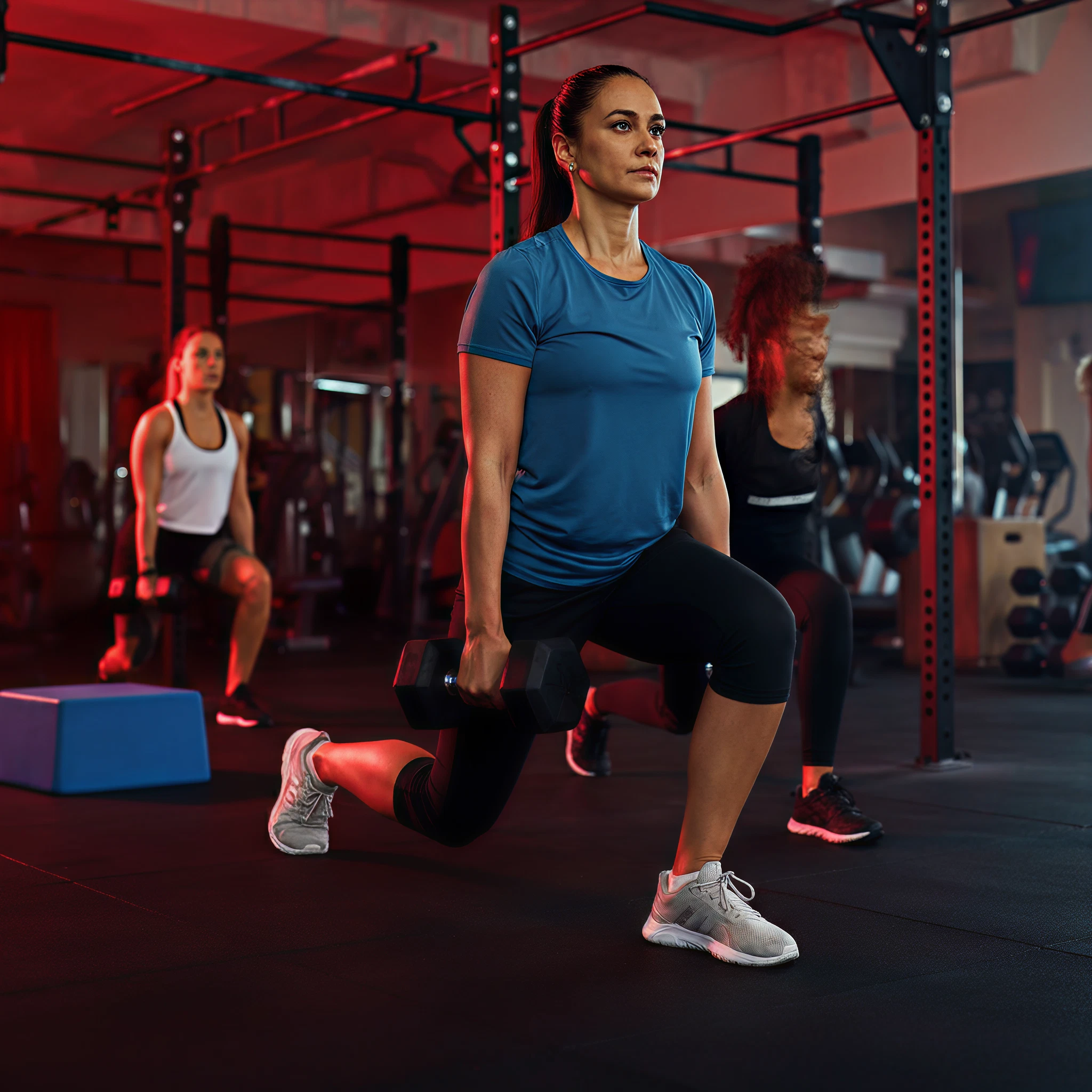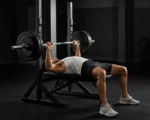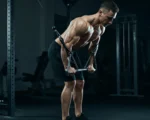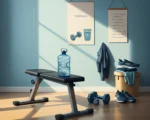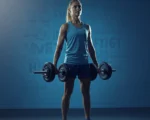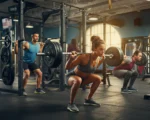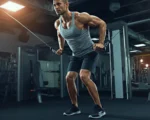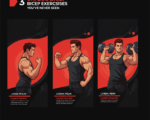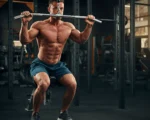Building stronger, more defined legs isn’t just about aesthetics. Targeted leg training enhances functional strength, improves mobility, and boosts athletic performance. Whether you’re a beginner exploring foundational exercises or a seasoned athlete looking to level up, this guide breaks down three key leg exercises–squats, lunges, and hamstring curls–for optimized results. Plus, we’ll share tips to perfect your form and tailor each movement for your fitness goals.
The Foundation of Leg Workouts
Squats
Benefits:
The squat is a powerhouse move, targeting multiple muscle groups, including the quadriceps, hamstrings, glutes, and core. It builds strength, improves mobility, and boosts functional performance.
How to Perform a Perfect Squat:
- Stand with feet slightly wider than shoulder-width apart, toes pointing slightly outward.
- Keep your chest up, shoulders back, and core engaged.
- Initiate the movement by pushing your hips back, then bending your knees to lower into a squat.
- Go as low as your mobility allows while keeping your heels grounded.
- Push through your heels to return to standing.
Pro Tips:
- For quad-focused squats, keep your torso upright.
- To target the glutes, emphasize driving your hips back as you lower.
- Advanced Variations: Front squats (place the barbell across your shoulders) or Bulgarian Split Squats (isolate legs one at a time).
Lunges
The Lunge Gamechanger:
The lunge stands out as one of the most versatile lower-body exercises. Variations like forward, reverse, and curtsy lunges allow you to target quads, glutes, and other stabilizing muscles differently.
Popular Lunge Variations
- Forward Lunge:
- Enhances quad engagement due to the forward driving motion.
- Form tip: Push off the front leg to return to standing and maintain an upright posture.
- Reverse Lunge:
- Easier on the knees and more glute-focused compared to forward lunges.
- Form tip: Step back into the lunge while dropping your back knee close to the floor.
- Curtsy Lunge:
- Promotes hip abduction and targets the gluteus medius (side glutes).
- Form tip: Step back diagonally behind your body and lower into the lunge.
- Lateral Lunge:
- Focuses on the inner thighs (adductors) while improving mobility.
- Form tip: Step to the side and lower your body, keeping the stationary leg straight.
Pro Tips for Lunges:
- For quad focus, allow your knee to track over your toes as you descend.
- For glute emphasis, hinge at the hips with a slight forward lean while keeping your shin vertical.
- Incorporate weights like dumbbells or a barbell for added resistance (dumbbells are beginner-friendly, while barbell or front-rack positions challenge posture and core stability).
Advanced Variation:
Try elevated reverse lunges to increase the range of motion at both the knees and hips, amplifying muscle activation.
Hamstring Curls
Benefits:
Hamstring curls isolate and strengthen the hamstrings, an often undertrained muscle group crucial for knee stability and overall lower-body power.
How to Perform Hamstring Curls
- Machine Version: Lie face down on the machine with your legs extended. Pull your heels toward your glutes, then lower slowly.
- Stability Ball Version: Lie on your back with your feet resting on an exercise ball. Lift your hips into a bridge position and curl the ball toward you by bending your knees, then roll it back.
Pro Tips:
- Avoid jerky movements; control is key for effective hamstring activation.
- Use a full range of motion without letting your hips sag during stability ball variations.
- For advanced athletes, try using resistance bands for added tension and variety.
Perfecting Your Leg Training Routine
- Warm-Up is Essential: Include dynamic stretches, like leg swings and lunges with twists, to prep your joints and muscles.
- Form Over Load: Always prioritize proper form over heavier weights to prevent injury and maximize muscle engagement.
- Adjust Training for Muscle Focus: Modify movements based on the target muscle (e.g., quads vs. glutes) by tweaking posture and mechanics.
- Progress Gradually: Increase weights or repetitions over time to challenge your muscles and promote growth.
Next Steps in Leg Training
To master the art of leg training, consistency and patience are key. Mix foundational movements like squats and lunges with accessory exercises like hamstring curls to achieve a well-rounded routine. And for those looking to fine-tune their form or explore advanced variations, resources such as MuscleWiki’s comprehensive guides can be invaluable.
With these exercises and tips, you’re well on your way to stronger, more functional legs. Now lace up your shoes, grab your weights, and start building the foundation of a powerful lower body!
